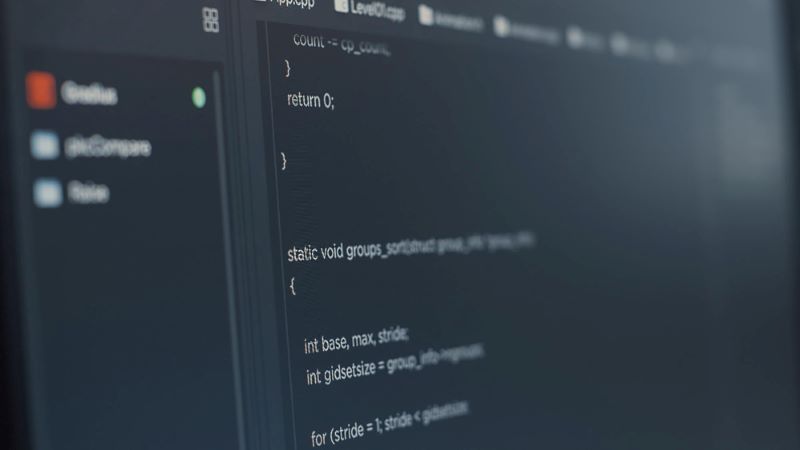A Guide to Python Syntax Errors
Although Python is known for its simple syntax, users often encounter syntax errors, especially if they’re new to the language. Syntax errors happen when users enter a string or character that the system’s interpreter — a computer program that converts high-level program statements into byte or machine code — can’t recognize. They can be frustrating because they prevent users from executing the program.
Table of Contents
Fortunately, you can easily fix Python syntax errors by determining their causes. This can help you build software products faster and collect information from the internet more effectively and efficiently.
What Are Syntax Errors in Python?

When running your Python code, the interpreter will turn it into Python byte code. The interpreter will then try to execute the code. However, if it finds invalid syntax during the parsing stage of execution, the interpreter will stop trying to run your program and produce a traceback about your Python syntax error.
A traceback is a report containing the function calls you made in your code where Python syntax errors occurred. Unfortunately, they can be confusing, especially for new users.
For example, here’s some code that contains a Python syntax error:
# gamedev.py
ages = {
‘hannah’: 21,
‘james’: 21
‘jonathan’: 41
}
print(f’Jonathan is {ages[“jonathan”]} years old.’)
When you run this code, you will get the following traceback:
$ python gamedev.py
File “gamedev.py”, line 3
‘jonathan’: 41
^
SyntaxError: invalid syntax
The traceback has several elements that can help you identify the Python syntax error in your code:
- The filename where the interpreter encountered the invalid syntax.
- The line number and reproduced code line where the interpreter encountered the issue.
- A caret (^) on the line under the reproduced code. This identifies where the code has a problem.
- The error message after the exception type SyntaxError. This provides information to help you determine the syntax error.
In the example, the filename is gamedev.py, the line number where the interpreter encountered the issue is line 3, and the caret points to the closing quote of ‘jonathan,’ which has no problems. The actual Python syntax error is located on the ‘james’ line, which should have a comma after 21.
This happened because the Python interpreter is trying to point out the invalid syntax, but it can only point to where it first noticed a problem. Here, that’s ‘jonathan,’ since it stopped running after the error. Whenever you get Python invalid syntax for no reason, you should move backward through the code to determine what is wrong.
Types of Syntax Errors in Python

Many users wonder how to fix a syntax error in Python. To fix Python syntax errors and code faster and with fewer errors, users must understand Python syntax problems and how to fix them to code in Python effectively and efficiently.
Here’s a list of common syntax problems and examples of syntax errors in Python, as well as how to identify them.
Missing, misspelling, or misusing Python keywords
Python keywords are protected words with unique meanings in the Python programming language. As such, you can’t use them as variables, identifiers, or function names in your code. You can only use Python keywords in Python’s context, so you can’t miss, misspell, or misuse them. If you do, you’ll receive a Python syntax error.
As of Python 3.8, there are 35 keywords in Python:
- False
- await
- else
- import
- pass
- None
- break
- except
- in
- raise
- True
- class
- finally
- is
- return
- and
- continue
- for
- lambda
- try
- as
- def
- from
- nonlocal
- while
- assert
- del
- global
- not
- with
- async
- elif
- if
- or
- yield
Misusing the assignment operator
Assignment operations are used to perform operations on operands or variables and assign values to the operator’s left side. Common assignment operations include:
- = (Equal Sign): Assigns the right side’s expression value to the left side operand.
- += (Add and Assign): Adds the right side operand with the left side operand and then assigns to left operand.
- -= (Subtract AND): Subtracts right operand from left operand and assigns to left operand if both operands are equal.
- *= (Multiply AND): Multiplies left operand with right and then assigns to left operand.
- /= (Divide AND): Divides left operand by right operand and assigns to left operand.
- %= (Modulus AND): Takes modulus using right and left operands and assigns result to left operand.
- //= (Divide(floor) AND): Divides left operand by right operand and assigns value(floor) to left operand.
Several Python cases prevent you from making assignments to objects. For example, Python prevents you from assigning a function call to a variable. You will receive a Python syntax error if you try to do so.
Missing brackets, parentheses, and quotes
Users often experience syntax errors due to mismatched or missed closing quotes, brackets, and parentheses. These mistakes can be difficult to spot in large projects, so use Python’s tracebacks to identify missing or mismatched quotes. The carat pinpoints the problem’s location.
For instance, you will get the following traceback or Python syntax error if you use single quotes around “don’t”:
>>> message = ‘don’t’
File “<stdin>”, line 4
message = ‘don’t’
^
SyntaxError: invalid syntax
The problem here is that the apostrophe in ‘don’t’ is the same character as the closing single quote. Thus, the carat points to the end quote of ‘don’t’. You can fix this mistake by surrounding the whole string in double quotes (“don’t”) or putting a backslash before the apostrophe (‘don\’t’).
Using the wrong indentation
Python has two subclasses of Python syntax errors that specifically deal with indentation issues:
- IndentationErrror: You will receive IndentationError if a line in a code block doesn’t have the right number of spaces.
- TabError: You will receive this error if a line uses spaces for indentation when the rest of the file uses tabs, or vice versa. People often miss this error when the tab size is the same width as the number of spaces.
Changing Python versions
Code that works on one Python version may not work on a newer version due to official language syntax changes.
For instance, the print statement was a keyword in Python 2 but became a built-in function in Python 3. As such, you will receive a Python syntax error if you use Python 2 syntax that isn’t valid in Python 3.
TypeErrors
Is TypeError a syntax error in Python? Yes, a TypeError is a kind of error that happens when you try to perform an operation on a value of the incorrect type. For example, you will receive a TypeError if you use a string method on a numerical value.
Defining and calling functions
Finally, Python may give you a traceback if you make a syntax mistake while defining or calling functions.
For instance, you will receive a SyntaxError if you use a semicolon instead of a colon at the end of a function definition. You will also receive a SyntaxError if you don’t use keyword arguments in the correct order. Keyword arguments are values that can be identified by specific parameter names when passed into a function.
Similarly, if you use a current Python feature that isn’t supported by an older version, you will get a SyntaxError. For instance, Python 3.8 introduced several new features, such as F-string syntax for debugging and Walrus operators. If you use these features in previous versions of Python, you will receive a SyntaxError.
How To Use Python After You Check Python Code for Syntax Errors

Now that you understand how to identify and fix common Python syntax errors, you can identify and fix syntax errors on your own.
Alternatively, you can use online Python syntax error checkers if you’re short on time, resources, or energy. These online tools can also analyze your code for security problems and provide actionable advice from your integrated development environment (IDE).
After fixing your syntax errors, you can use Python for the following tasks:
- Artificial intelligence (AI) and machine learning (ML) projects: Python has many libraries and packages for AI and ML projects, such as OpenCV, TensorFlow, PyTorch, and Caffe.
- Software and game development: If you’re fluent in Python, you can create various software, including blockchain apps, video apps, and games.
- Web development: Python has many web development frameworks, such as Flask, Pyramid, and Django.
- Web scraping and data analytics: Many companies manually copy and paste data from the internet into Excel sheets to gather information about their industry, business, and customers. However, this can be time-consuming. Instead, you can web scrape with Python after fixing syntax errors. Web scraping refers to gathering information from the internet. There are two main ways to web scrape: through web scrapers or web scraping application programming interfaces (APIs). Web scrapers or web scraping robots are software programs that automatically pull information from websites. In contrast, web scraping APIs are data extraction tools for specific programs, websites, and databases that only provide access to data that website owners want you to access.
- Data analytics: After gathering data through web scraping, you can use Python to clean, manipulate, and organize data. This empowers you to derive actionable insights about your business, customers, and industry.
Final Thoughts

Python syntax errors can be challenging to pinpoint, especially if you’re new to Python programming. Fortunately, Python’s traceback function allows you to check Python code for syntax errors. Common types of syntax errors in Python include missing or misusing Python keywords, misusing the assignment operator, missing brackets and quotes, using the wrong indentation, changing Python versions, and defining and calling functions.
After mastering Python syntax, you can use Python to build a wide range of projects, including AI and ML applications, websites, software, and games. You can also use Python web scraping to learn more about trends in your company’s industry, location, or niche.
A code-free and cost-effective alternative to Python web scraping is Scraping Robot’s powerful web scraper and web scraping API. Built to support developers, Scraping Robot’s scraper and API handle all the headaches of Python web scraping, such as Python syntax errors, proxy management and rotation, browser scalability, server management, and CAPTCHA solving. Sign up today to receive 5,000 free scrapes per month.
The information contained within this article, including information posted by official staff, guest-submitted material, message board postings, or other third-party material is presented solely for the purposes of education and furtherance of the knowledge of the reader. All trademarks used in this publication are hereby acknowledged as the property of their respective owners.
